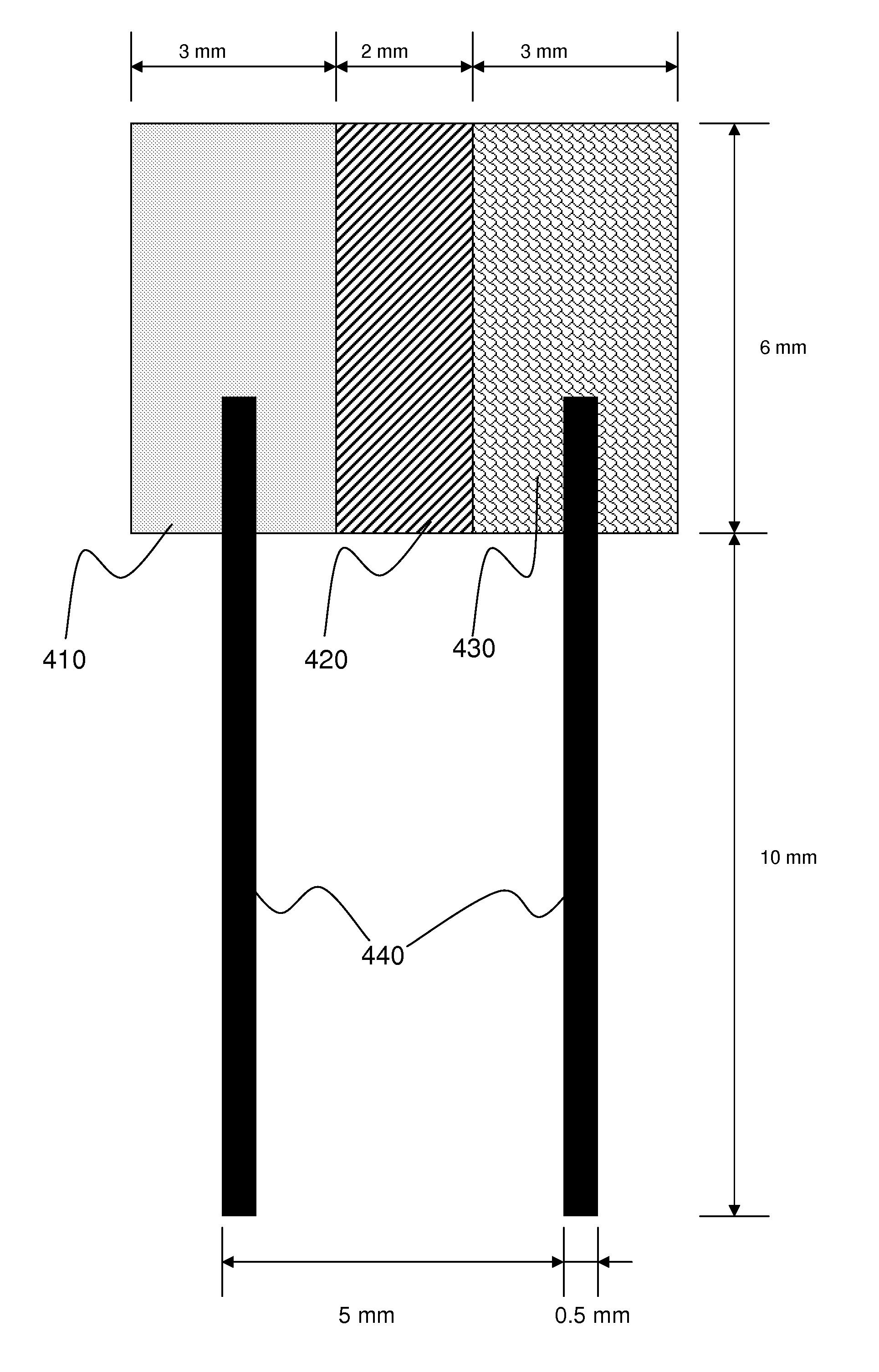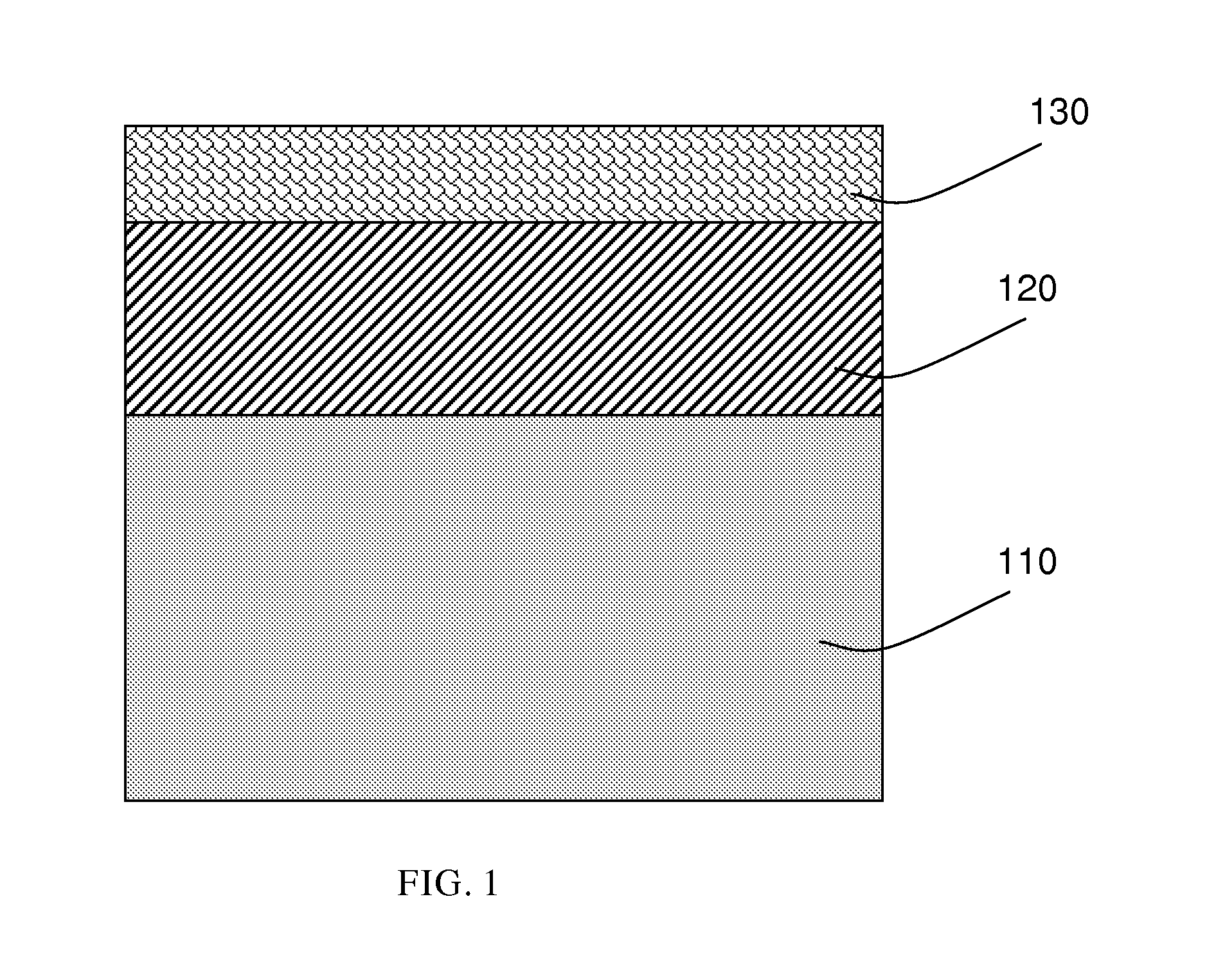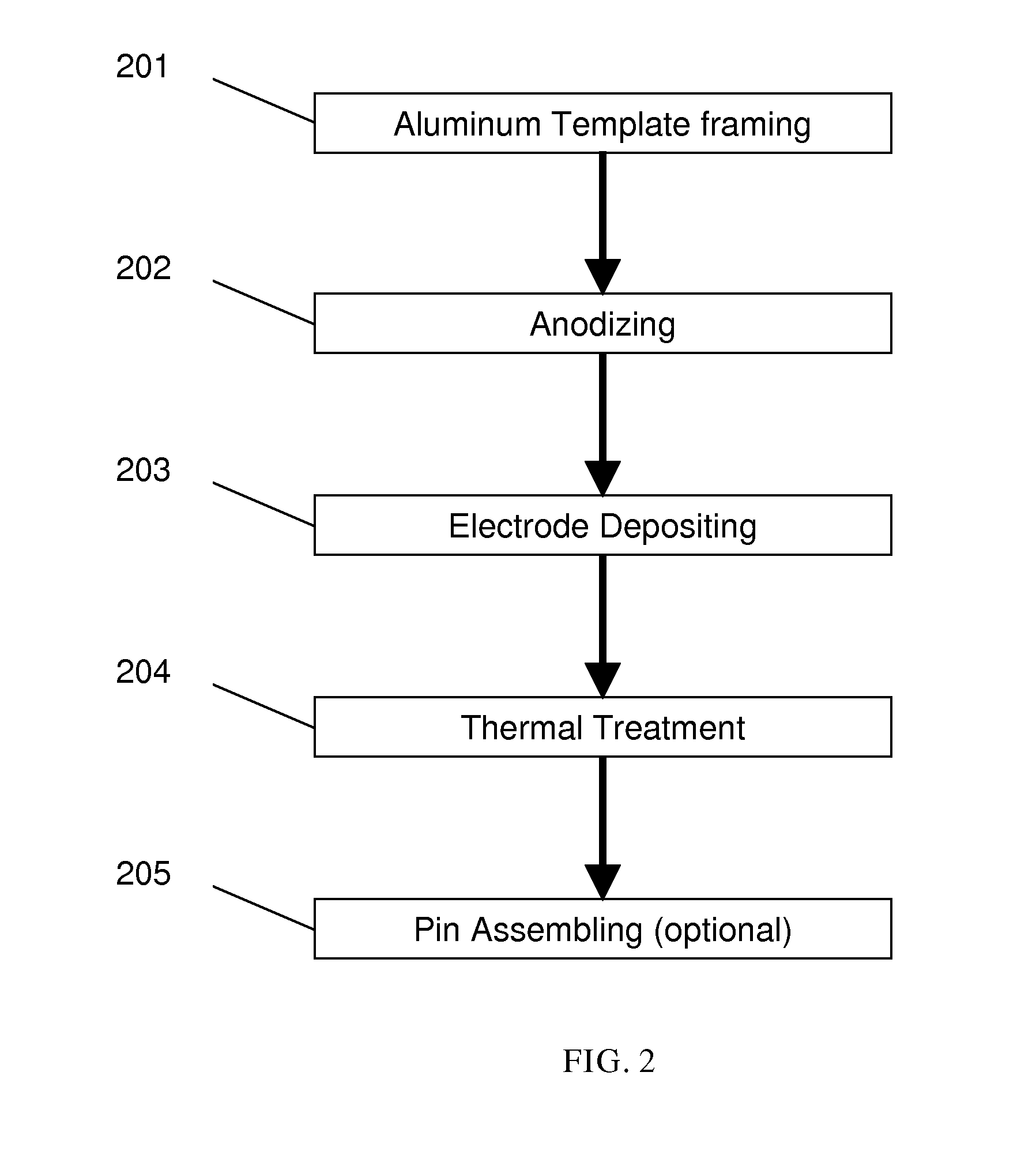Rapid response relative humidity sensor using anodic aluminum oxide film
a technology of aluminum oxide and relative humidity sensor, which is applied in the direction of instruments, specific gravity measurement, superimposed coating process, etc., can solve the problems of prior aao sensors degrading, sensors cannot operate in full humidity range, and anodization techniques for protective applications were not directly applicable to creating aao-based humidity sensors, etc., to achieve rapid response, high humidity sensitivity, and simple
- Summary
- Abstract
- Description
- Claims
- Application Information
AI Technical Summary
Benefits of technology
Problems solved by technology
Method used
Image
Examples
Embodiment Construction
[0013]Turning to the drawings in detail, embodiments of the present invention show capacitive humidity sensors using anodic aluminum oxide thin films. FIG. 1 is a schematic diagram of a sensor. The various components are not shown to scale relative to each other.
[0014]The main body of the sensor is an anodic aluminum oxide (AAO) thin film 120 having a thickness of about 2-20 μm. AAO film 120 is sandwiched between a top metal layer electrode 130 having a thickness of about 20-200 nm, and an Al substrate 110 as the other electrode. The AAO thin film contains nano-sized channels of about 10-100 nm in diameter. In operation, water vapor is adsorbed onto the AAO film channel surfaces, changing the capacitance of the AAO film. Because the nano-structured films can be carefully controlled as to channel size and thickness, rapid response humidity sensors result due to the high surface area provided by the nano-sized channels.
[0015]The fabrication of the humidity sensors of the present inven...
PUM
| Property | Measurement | Unit |
|---|---|---|
| diameter | aaaaa | aaaaa |
| thickness | aaaaa | aaaaa |
| temperature | aaaaa | aaaaa |
Abstract
Description
Claims
Application Information
 Login to View More
Login to View More - R&D
- Intellectual Property
- Life Sciences
- Materials
- Tech Scout
- Unparalleled Data Quality
- Higher Quality Content
- 60% Fewer Hallucinations
Browse by: Latest US Patents, China's latest patents, Technical Efficacy Thesaurus, Application Domain, Technology Topic, Popular Technical Reports.
© 2025 PatSnap. All rights reserved.Legal|Privacy policy|Modern Slavery Act Transparency Statement|Sitemap|About US| Contact US: help@patsnap.com



